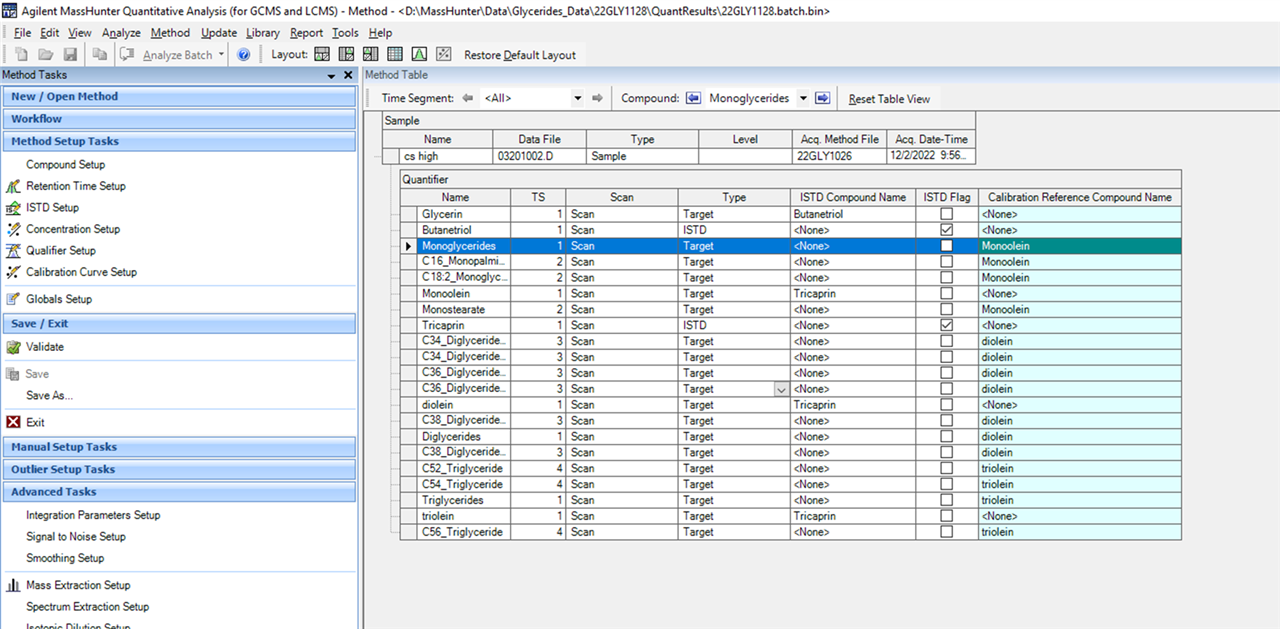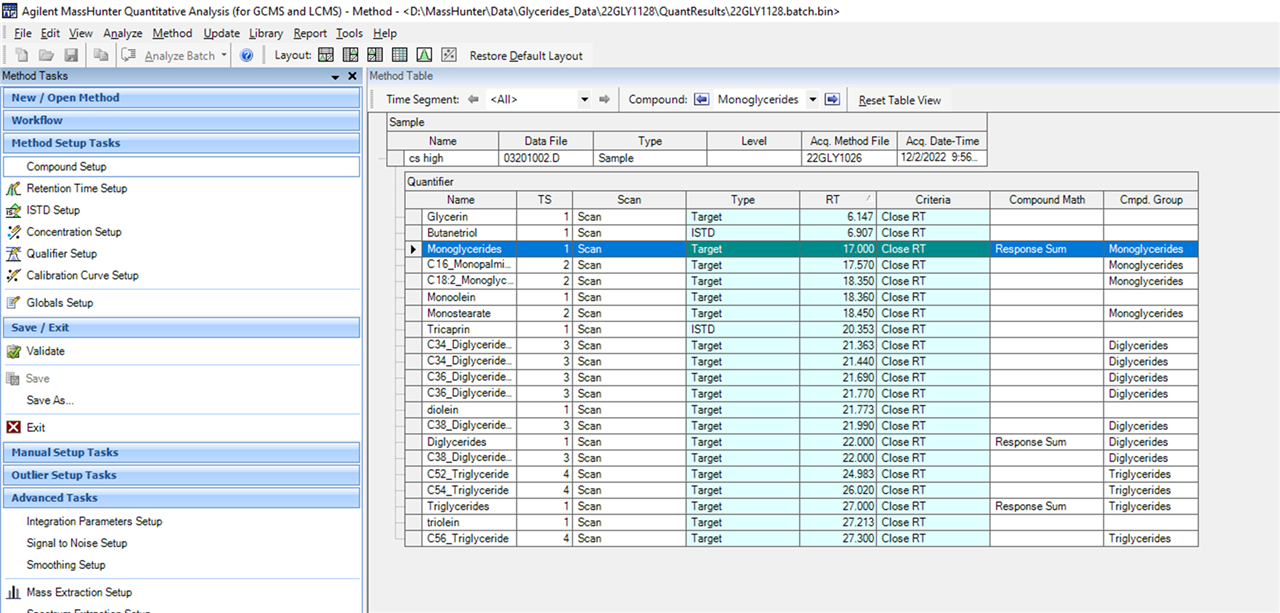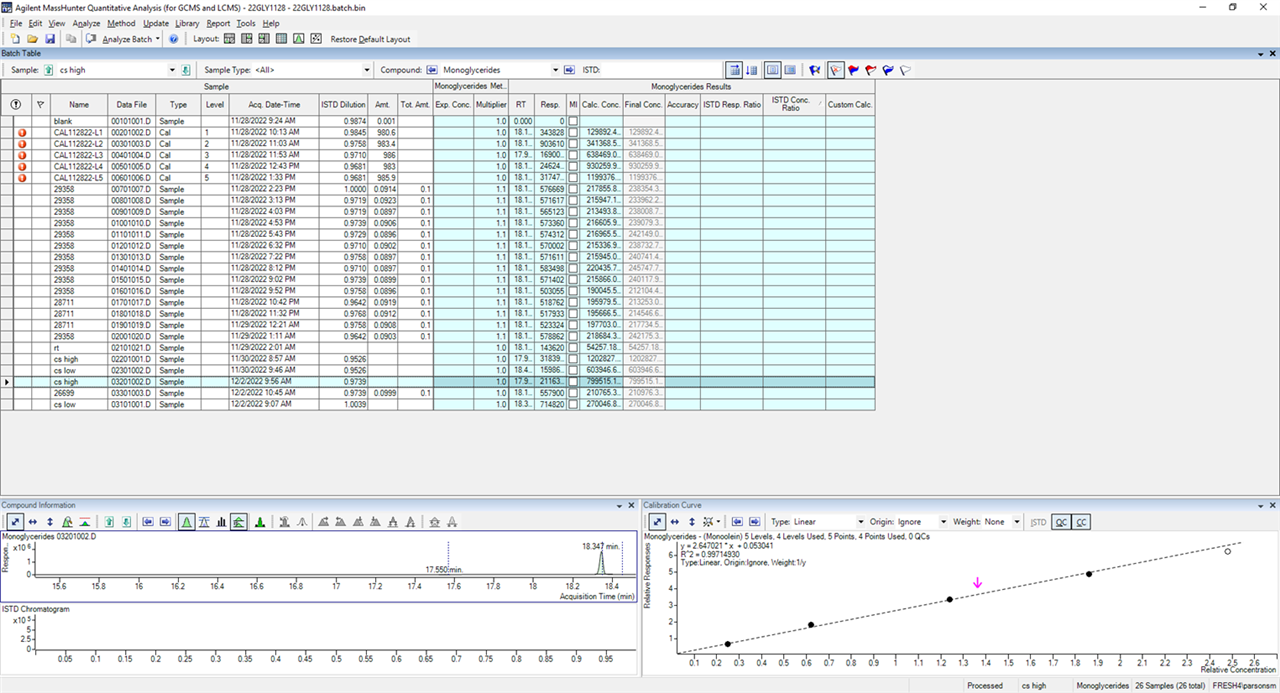I am using MassHunter to quantitate GC data. I have 3 known compounds(monoolein, diolein, and triolein) and many suspects. A single internal standard, tricaprin, is used as an internal standard. The suspects are grouped into three Compound Groups (Mono, Di and Triglycerides). I used the inherit calibration curve from the advanced method menu and applied it to the suspects. I am using Compound Math to return the Sum of the Responses from the suspects to the Compound Group. When I analyze the batch the final and calculated concentrations are non-sensical for both the compound groups and suspects (I'm also using a ISTD Dilution, all my preparations are gravimetric).In addition, the ISTD Response Ratio is not calculated. I need this ratio, or at least the ISTD Response from the sample to perform a calculation. The Sum of the Response from the Compound Group are accurate and the arrow pointing to the concentration in the calibration curve seems accurate, so it seems to be doing something right.
Do I need to add a different column to add either the ISTD Response ratio or the ISTD Response for the sample?
Thanks
Matt







